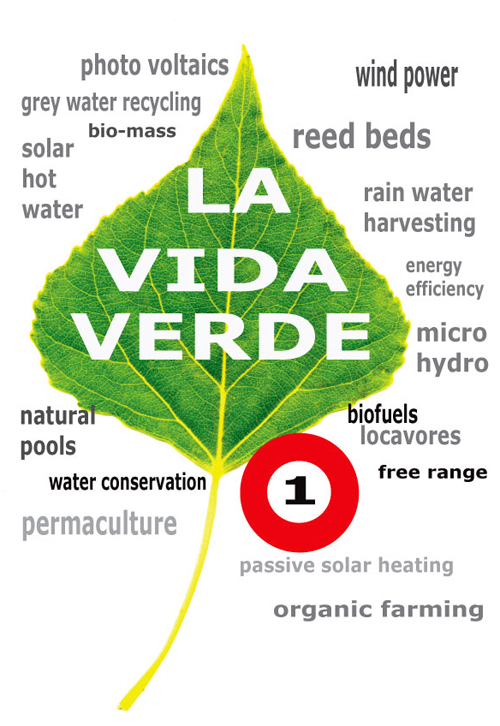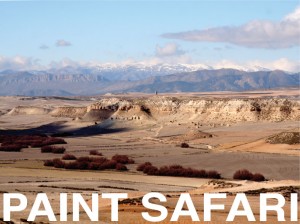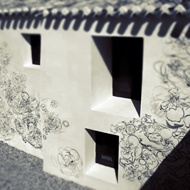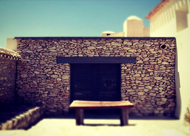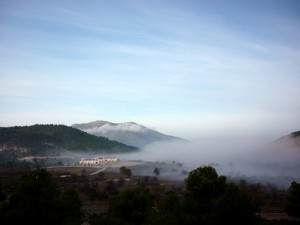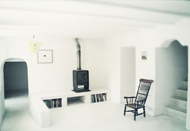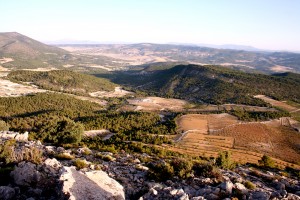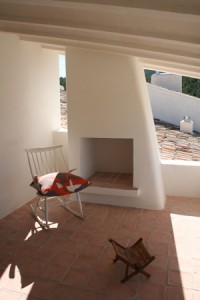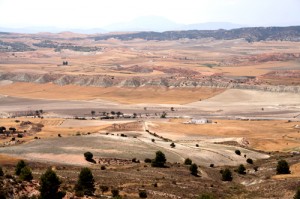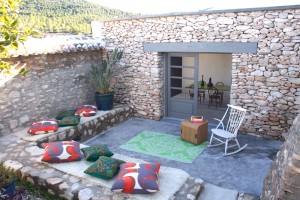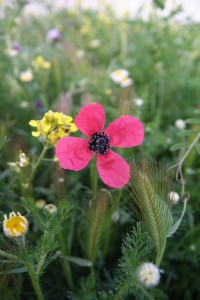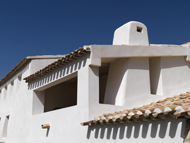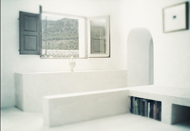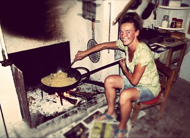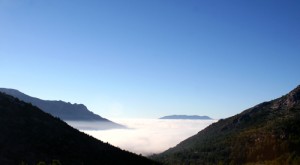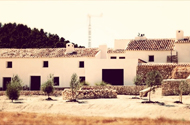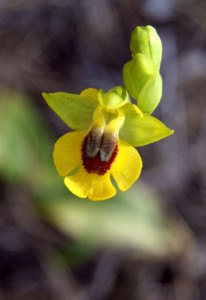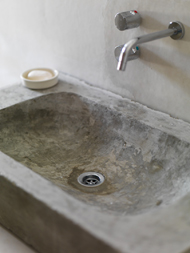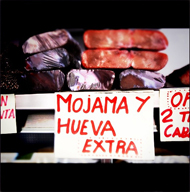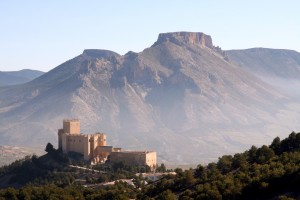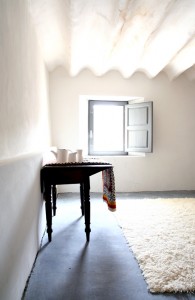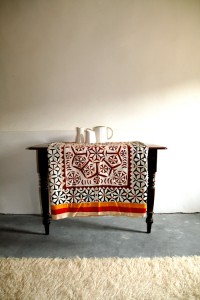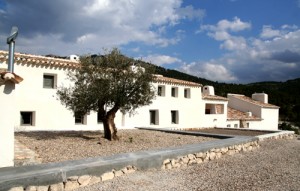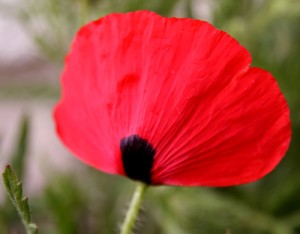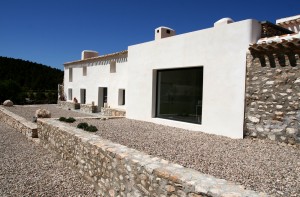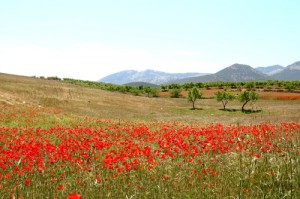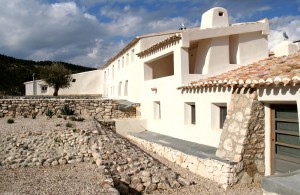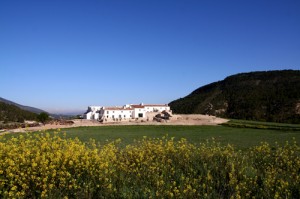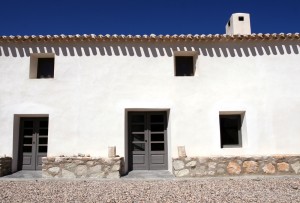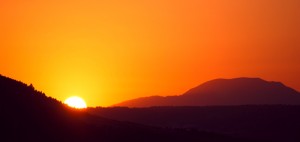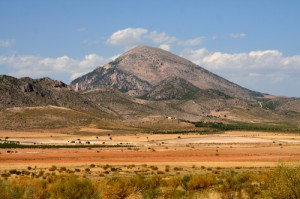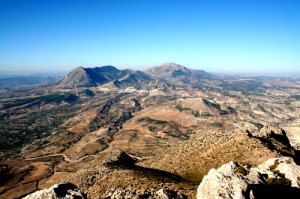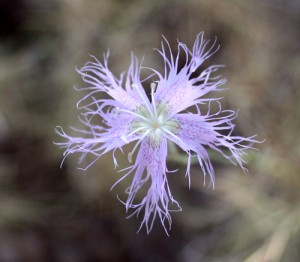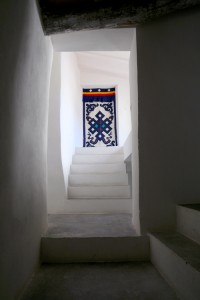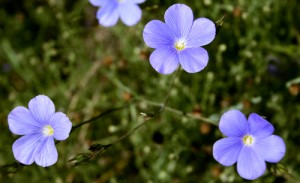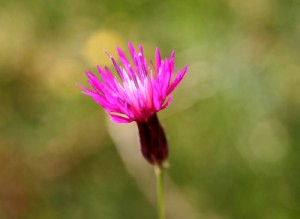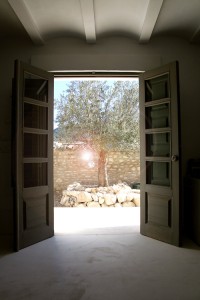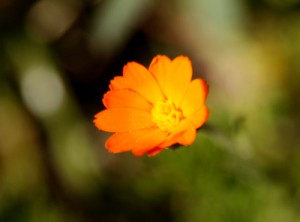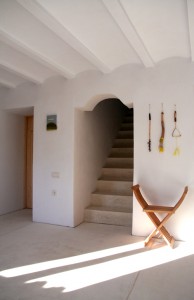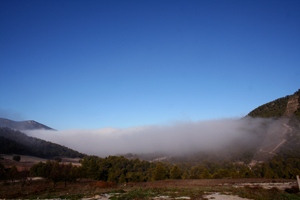January 21, 2014 at 5:51 pm
· Filed under Design, Environment, permaculture, Plantlife
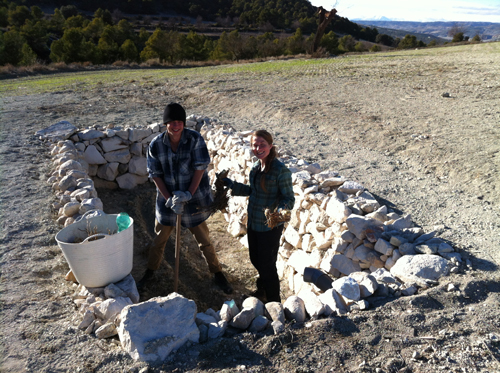
Here is French Franck (actually a Kiwi) and Canadian Fannie, two fab volunteers adding the final touches to our new grey water reed bed. That’s planting the giant cane Arundo Donax.
The weather is beautiful, warm with a cool breeze, ideal for planting…
and in they go. Finished in half an hour. I’ll let you know when they germinate.
Permalink
July 24, 2011 at 5:29 pm
· Filed under Plantlife
These wonderful gardens surround a beautiful home built in 1927 by the Russian Colonel Nicolai Woevodsky and his English aristocrat wife Dorothy Webster. They were both lovers of architecture, art, decoration and gardening and this was their dream home. Now it’s a 17 hectare garden with over a thousand species of plant and the grounds are home to summer concerts with such alumni as Jose Carreras, Sting and Tom Jones!!!!!!!
A quick cycle up there gave me a few hours to paint the coastline from the peninsular which was idyllic…
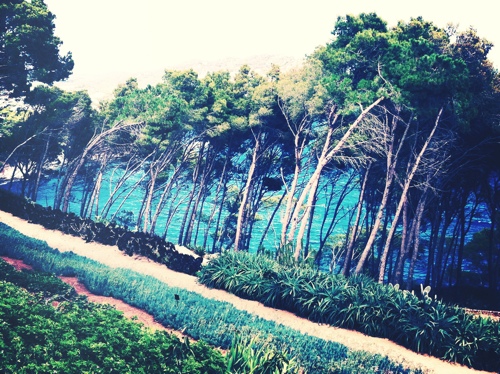
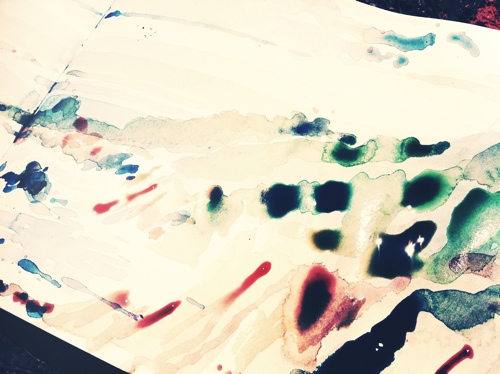
Permalink
November 11, 2010 at 2:27 pm
· Filed under Plantlife
Poppy cross at Los Gázquez…

Permalink
May 18, 2010 at 8:35 am
· Filed under Plantlife
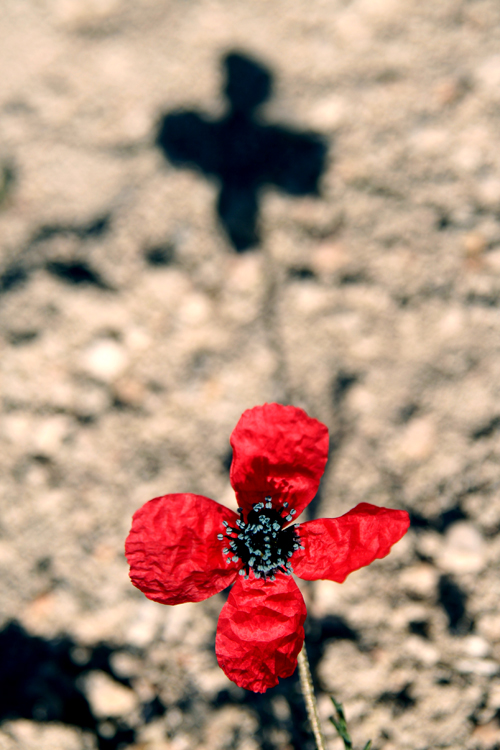
Art Forms in Nature 29th May - 5th June
Natures own ‘Cross Fleury’ early this morning at Los Gázquez. If we included variation determined by situation I could photograph a different poppy for each day of the week, just on our doorstep.
Permalink
May 9, 2010 at 6:58 pm
· Filed under Plantlife
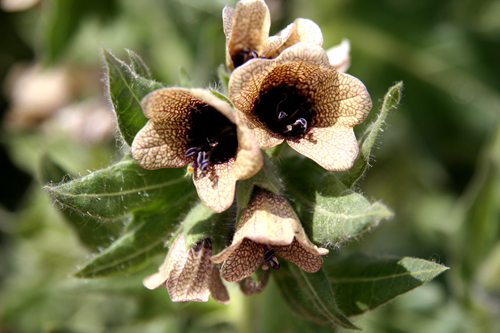
While Sue and I are carrying on with our audit of wild plant species at Los Gázquez we came across this strange creature. Cream petals with brown, slightly geometric, varicose veins and purple stamens. Furry leaves and a starchy leaf quality. Nature has a way of letting you know when something is potentially unpleasant even if it is fascinating.
It’s Hyoscyamus niger or Henbane. It’s also known as stinking nightshade and is highly toxic. It has hallucinogenic properties as well as anaesthetic and was often used with deadly nightshade, mandrake and datura for it’s psychoactive qualities as well as making beer in Germany in the 15th century.
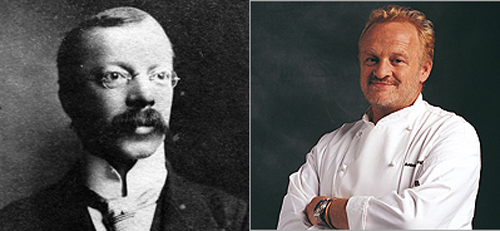
‘Dr Crippen and Antony Worrall Thompson’ you ask! Well the infamous homeopathic doctor from America poisoned his wife with henbane and was the first criminal to be apprehended by wireless communication. Antony Worrall Thompson tried to poison his readers with henbane in Healthy and Organic Living Magazine suggesting that henbane was ‘a tasty addition to a salad’.
Permalink
May 9, 2010 at 1:01 pm
· Filed under Plantlife
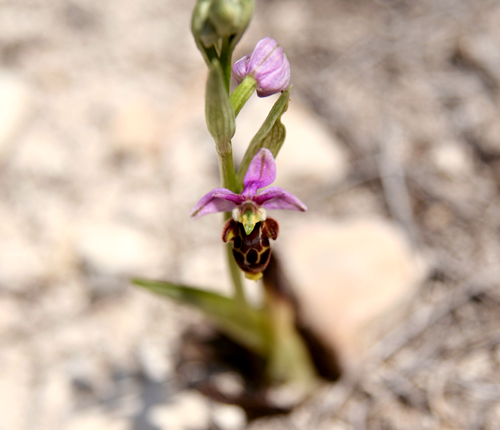
As part of our Art Forms in Nature course friend of Los Gázquez Sue Amos is here to lend a helping hand.
Whilst scouring the land for interesting material Sue suggested that we should start an inventory of the wild flowers here up in our part of the park. I felt immediately enthusiastic about the idea and Sue immediately spotted this beautiful little orchid. We knew it was a bee orchid but which one?
It was time to consult the awesome Iberian Nature Forum. And whilst there I thought it would be fun to demonstrate to Sue just how brilliant a human resource this is. So, I posted a request for an orchid ID along with a photograph of the flower and I let the members know that it’s identification was a race and that I would blog the winner. Well, I posted yesterday at 19.15 and got my first reply at 19.31 from senior member Dave from León…
Hi Simon
Bee Orchid,which one no idea, I claim my prize
Regards
Dave 19:31
Well Dave that’s impressive but the first full ID was from Jesús at 20.23…
I think you must look for Ophrys apifera or Ophrys scolopax.
Regards
Jesús
This was seconded by full member Mick at 20.36 confirming the scolopax ID and confirmed again by Andrés at middnight and backed up on his fantastic web site Flores de Almería
Thank you gentlemen and let me give the prize to the forum.
Permalink
May 3, 2010 at 10:00 am
· Filed under Plantlife
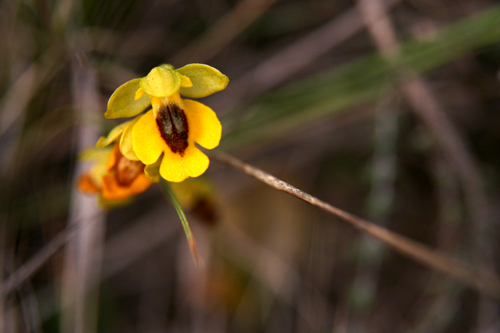
Yesterday we went looking for Yellow Bee Orchids. We searched the same places but were surprised to find the flowers less abundant than last year. Surprised as our wet winter has brought a profusion of other wild flowers whereas last year the winter was quite dry.
So whilst the Yellow Bee Orchid is not ‘in the pink’ the other wild flowers are in fine fettle. Expect more photos of flowers…
Permalink
August 14, 2009 at 4:43 pm
· Filed under Architecture, Comida, Design, Environment, Landscape, Plantlife
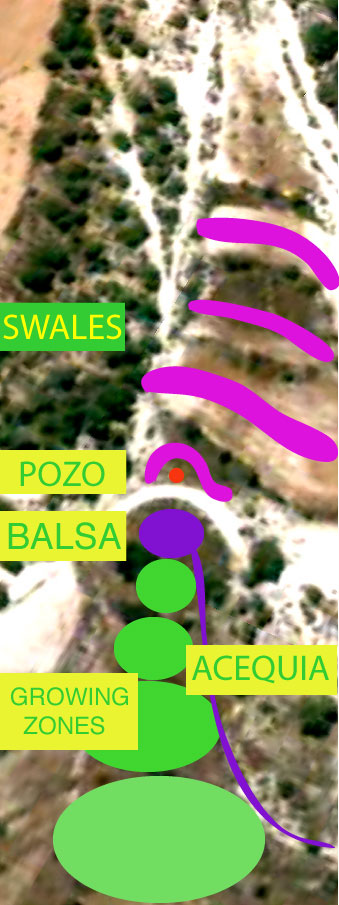 Here at Los Gazquez we have a new scheme, an experiment with the techniques of Permaculture.
Here at Los Gazquez we have a new scheme, an experiment with the techniques of Permaculture.
If you have never heard of Permaculture it is basically a design system for human settlements and perennial agricultural systems that mimic the relationships found in the natural ecology. It was conceived in Australia in the 1970′s by David Holmgren and Bill Mollison.
Their idea was to rapidly train individuals in a core set of design principles and then those individuals could go off and design their own self sufficient communities which wouldn’t rely on industrial systems which were exhausting the earth’s resources.
For our purposes we intend to use Permaculture water harvesting techniques to revive a dried up well. And the aim is to do this without resorting to ‘bore holes’ to find a more abundant water supply, but to create a water supply by the subtle exploitation of gradient and organic mulches.
The red dot in the centre of the drawing is the old dry pozo or well. It is a covered structure with a door and is about four meters deep. Below the well is the balsa or small reservoir to which one once would have deposited the water taken from the well. The acequia is the canal system introduced by the Moors to Spain and is used to transport the water from the balsa to the terraces below (or growing zones).
To start we are going to restore the fabric of the pozo and clear the old balsa of vegetation and undergrowth. Crucially this organic material is not going to be lost but kept for using as mulch.
Next, above the pozo we are going to dig a series of swales, indicated in purple. A swale is an English word to describe a low or hollow place or marshy depression between ridges. The swales will vary depending on the topology of the area and will vary in width and length but the depth will be in the region of 800 to a 1000 mm. The interior walls will be supported by dry stone walls. To the lower side of the swale a large mound of organic material, collected when clearing the land for the project, will be placed.
The idea is that when scarce rainfall does occur the swale fills with water. Being on a gradient the captured water will sink into the earth. However and crucially, the mulch on the downside of the gradient will act as a sponge, gently supporting the water table being created beneath it nearer the surface. The principle is that the two fold action of the mulch is to support a water table beneath the surface by osmosis and to severely reduce evaporation from the surface.
In time a water table should establish itself and ultimately feed the old well again. And in turn we can fill the balsa and use the acequia to irrigate the terraces below and start growing organic crops for the house.
It sounds so easy I know, but this is an experiment and I shall make this an on going column on my blog with it’s own page.
Permalink
July 23, 2009 at 2:26 pm
· Filed under Environment, Landscape, Plantlife
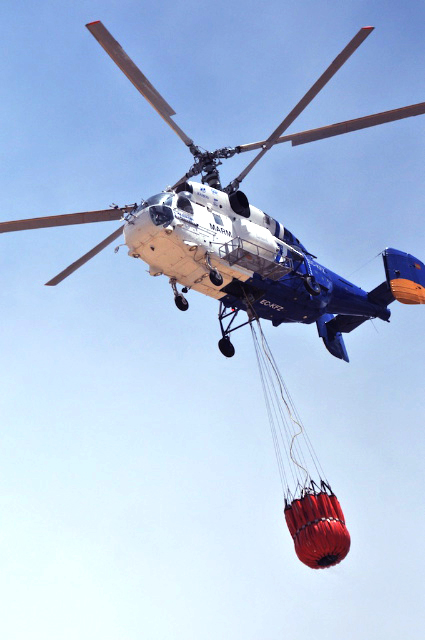
A wildfire came to the woody slopes of the Comarca de Los Velez last week. It was a day heavy with cloudy skies and a hot humid atmosphere. Inevitably a thunderstorm passed this way and a bolt of lightning struck a sierra just a few meters west of the Torre del Charcon.
The ensuing fire was dealt with very rapidly. Here in our region of Spain, and I am sure the whole of the southern peninsular, the authorities are exceptionally vigilant. From Los Gazquez alone we can see, and be seen, by two fire watch towers at any one time.
Within minutes two helicopters were on the scene, taking water from local balsas, which are farmer’s small reservoirs used to irrigate the land. They drop their flexible Bambi Buckets into the water and carry anything between 275 to 9840 litres of water depending on the lifting capacity of the helicopter. The contents are then delivered directly to the site of the fire.
Once the helicopters had the flames under control the king of the fire fighting equipment is deployed. Sadly I have no pictures of the sea plane or water bomber. What I can tell you is that within minutes of scooping up a few thousand liters of the Mediterranean sea and then mixing it with fire retardant it’s payload was delivered with extreme accuracy right on the peak of the 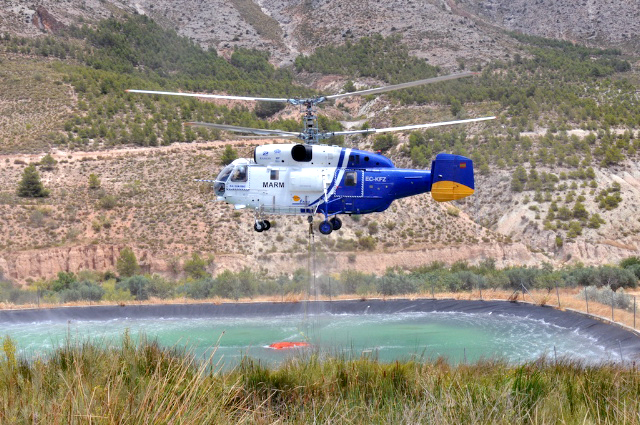 mountain and the remainder of the fire.
mountain and the remainder of the fire.
The sea plane has left a red patch of fire retardant on the point of the sierra. It is a mixture of ammonium sulfate and attapulgite clay thickener or diamonium phosphate with a guar gum derivative. These chemicals act as fertilisers to help the regeneration of plant life after the fire. The red colouring is ferric oxide and is used to indicate where the retardant was dropped. Without marking the point of contact the chances of re-ignition are quite high.
Thanks to my mate Nick for his pictures. After all it was outside his front door.
Permalink










 Here at Los Gazquez we have a new scheme, an experiment with the techniques of Permaculture.
Here at Los Gazquez we have a new scheme, an experiment with the techniques of Permaculture.
 mountain and the remainder of the fire.
mountain and the remainder of the fire.